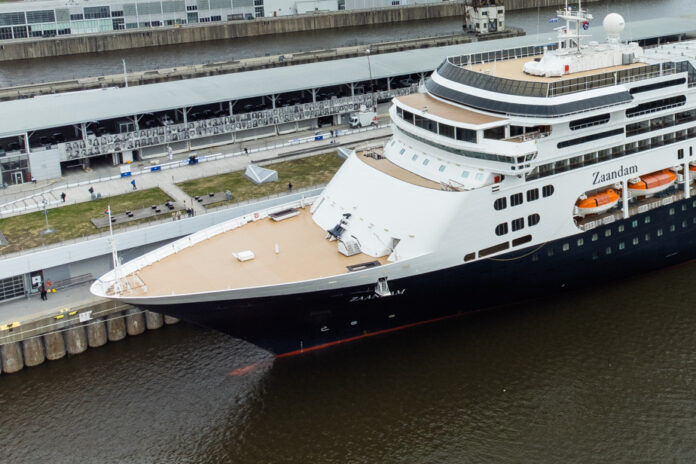Nearly 1,500 passengers from Florida disembarked the gigantic cruise ship Zaandam on Saturday morning, marking the very first day of the cruise season in Montreal.
In total, more than 45,000 passengers are expected in Montreal by this sea route this year. The benefits are estimated at $25 million for the city, said Mélanie Nadeau, vice-president of public affairs for the Port of Montreal.
While those numbers show a 20% increase over last year, they’re still nearly half of pre-pandemic cruise passenger traffic, Ms. Nadeau acknowledges.
Reaching Montreal by cruise ship is not without its challenges, and only smaller ships can do it. Indeed, from Quebec, the bridges of a height of fifty meters limit the height of the boats.
The Zaandam, for example, is 47 meters high. For this ship, the cruise season begins when the water level has dropped enough to allow navigation under the bridges, explains its captain, the Dutchman Ane Smit.
The latter has been sailing to Montreal since 1999 for Holland-America Line, which celebrates its 150th anniversary this year.
Entering and exiting the strong currents of the river makes navigation particularly risky, he explains.
The captains must also be accompanied by pilots from the St. Lawrence, specialized in navigating the river, to navigate it.
“You have to know the shipping channel like the back of your hand,” notes Ms. Nadeau.
Saturday morning, a row of taxis take turns on the Grand Quay of the Port of Montreal to pick up cruise passengers. The rain threatens, but some incursions of sun are at the rendezvous. Some tourists end their trip in Montreal while others take advantage of a day to visit the metropolis before returning aboard the ship to Boston.
According to Yves Gilson, marketing and cruise director for the Port of Montreal, the restrictions related to navigation to the metropolis make it a luxury destination. “Here, there is no risk of overtourism,” he rejoices.
The cruise industry has long been criticized for its environmental impact. A study published in December 2021 in the scientific journal Marine Pollution Bulletin indicated that despite technological advances, cruise ships affect the air, water, soil and fragile habitats for wildlife.
In Montreal, infrastructure has been in place since 2017 to limit the negative environmental impact, said Nadeau.
The Port of Montreal has become the only one on the St. Lawrence to allow cruise ships to connect to the Hydro-Quebec electrical network.
The Zaandam is one of the ships that have been modified to be able to be plugged in when docked in port. “The electricity goes into the engine room, so they can stop all the engines and it’s the electricity that replaces the energy on board,” explains Jean-François Belzile, the director of maritime operations and harbor master.
It shows the enormous wires that go from up to the monumental hull. Port of Montreal facilities can supply 6.1 or 11.6 kilovolts of electricity, depending on the vessel.
The Port of Montreal is the only one on the St. Lawrence to offer this option, and one of 25 to do so worldwide. This year, of the 51 visits that Montreal will receive from a cruise ship, 19 will be made by eight ships able to connect.
Rules also tightened last year on discharging sewage into the river, Belzile said.
Previously, between Quebec and Laval, part of the wastewater from the boats could be discharged into the river, he explains. However, this is no longer allowed.
Since 2017, the Port of Montreal has had a service to receive gray water (washing water) and black water (toilet discharges) which are then treated by the City’s purification facilities.
While the commotion to prepare the ship for its departure continues, cruise passengers take advantage of the cobblestone streets of Old Montreal.
They will continue to parade until the end of October, which, with its colorful foliage, represents the height of the cruise tourist season in Montreal.


















